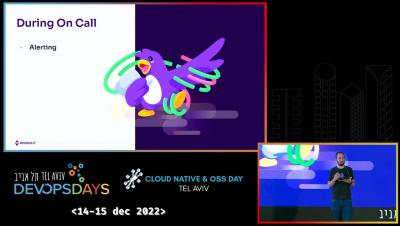Systems | Development | Analytics | API | Testing
Rookout
Make Mistakes, Recover Fast
Making mistakes is a part of life. It’s how we learn and grow. However, many people – and teams – struggle with the aftermath of making a mistake, and it can be challenging to recover quickly.
5 Basic Steps To Implement The Technology Acceptance Model Of Usefulness In Your Development Organization
As engineering leaders, we all struggle to find the balance between creating cool technology and useable technology. Let’s be real. We all want to create cool things. It’s in our nature. But what’s the point of doing so when no one will use it? It’s crucial to remember that the ultimate goal of our work is to create something helpful and effective. Our work has to have a purpose.
Rookout Live Metrics
10 Dos and Don'ts When Debugging Cloud-Native Applications
Lately, everyone has been jumping on the cloud transformation bandwagon, which isn’t surprising, because when it comes to tech, you don’t want to find yourself behind, stuck with your dusty old monoliths. Just kidding – we love ourselves some good old monolith architectures – but there’s no comparing to dynamic, cloud-native technology.
Enter the Metrics: Measure App Performance In Real-Time, On-Demand
When it comes to understanding what’s happening in your code – and your service health, specifically – business and code-level metrics are key. While most developers are experts in their own code, that doesn’t mean that they’re also experts on the metrics, statistics, or distributed tracing from the code they’re working with. The code-level metrics they need are tough to set up and it’s something that no one else can do for them.
90-Second Hack To Install A Node.JS Agent With No Code Changes
Installing Rookout on your Node.JS application is usually a breeze. Run `npm install`, add a line of code, and you are done. Yet, in some rare cases, we encounter more frustrating use cases. For example: When those tough situations arise, our customers often refer to this blog post we wrote years ago about deploying a Java Agent. So, if you are looking for an easy and portable way to deploy Node agents without changing your code, you’ll want to read this article.
Should you wake up in the middle of the night because production is down - Liran Haimovitch
How To Use Mock Data Without Changing Internal Logic
In every job and every company, that day always comes where you find that you…actually need to do some work. And by that, I mean finding new innovative solutions to tasks and projects instead of going with the tried-and-true methods. Recently, my team, of full stack developers were tasked with building a webview app to support our live debugging IDE plugin. This would allow us to align the user experience with our pre-existing web app.











